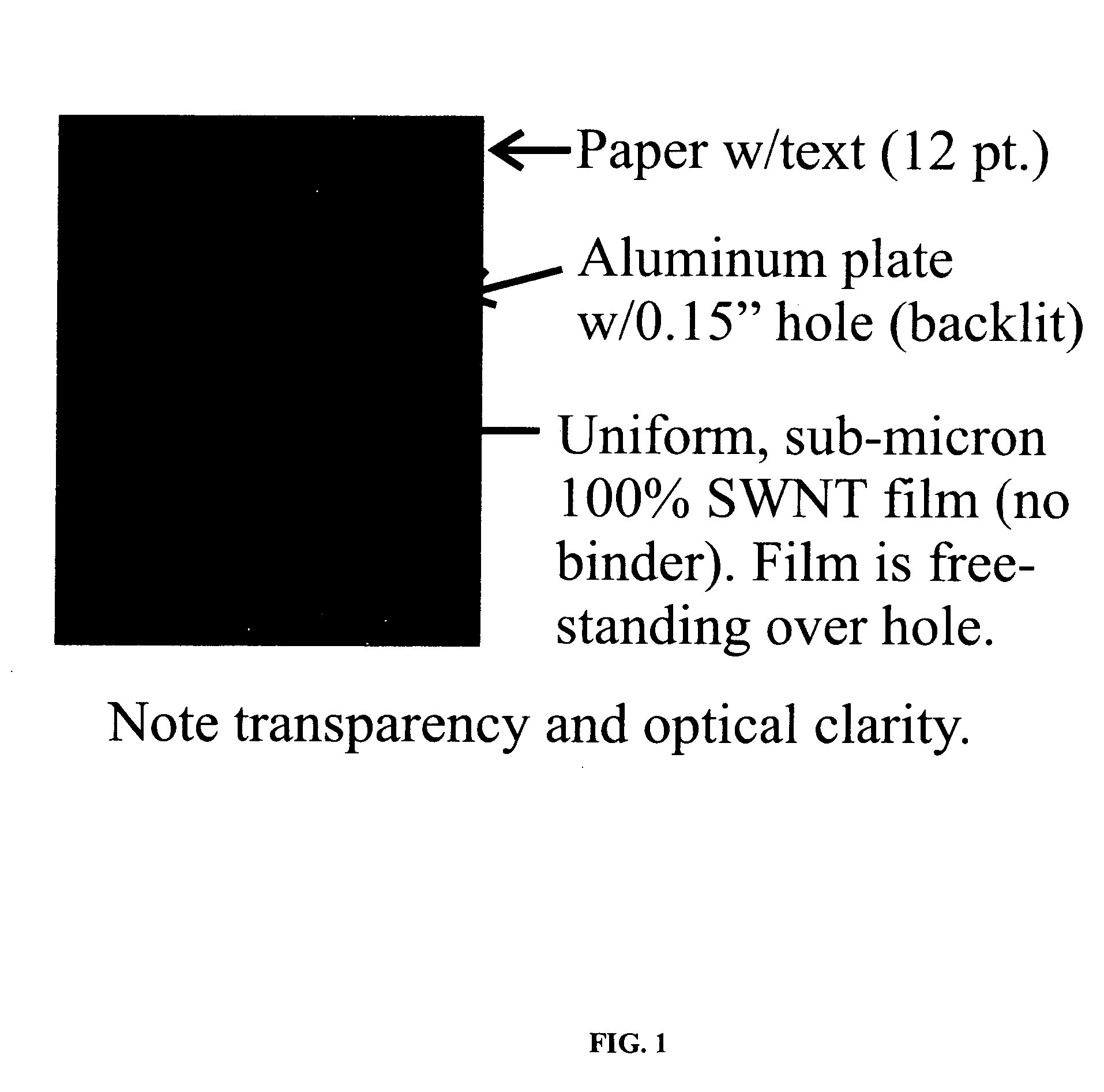Transparent and electrically conductive single wall carbon nanotube films
a carbon nanotube, transparent technology, applied in the direction of carbon-silicon compound conductors, nanoinformatics, transportation and packaging, etc., can solve the problems of not providing the electrical conductivity necessary for applications, requiring electrical continuity of the nanotube film, and not solubility of the nanotube in any known evaporable solven
- Summary
- Abstract
- Description
- Claims
- Application Information
AI Technical Summary
Benefits of technology
Problems solved by technology
Method used
Image
Examples
Embodiment Construction
[0016] The invention provides single wall carbon nanotube (SWNT) films which simultaneously exhibit high electrically conductivity, optical transparency and uniform optical density across their area, and methods for producing these films. Films according to the invention transmit light in both the visible and infrared portion of the electromagnetic spectrum.
[0017] Bulk electrical conductivity in nanotube aggregates requires that some appreciable fraction of the nanotubes be electrically conducting and that this fraction have sufficient intimate electrical contact with each other to transport charge throughout the bulk. Electrical conductivity of the nanotubes themselves can come from two sources. A first source is from the metallic nanotubes in the sample, which comprise about ⅓ of the nanotubes in SWNT material obtained commercially. A second source can come from semiconducting nanotubes in the sample, provided the semiconducting nanotubes are doped with a suitable charge transfer...
PUM
| Property | Measurement | Unit |
|---|---|---|
| sheet resistance | aaaaa | aaaaa |
| diameter | aaaaa | aaaaa |
| wavelength | aaaaa | aaaaa |
Abstract
Description
Claims
Application Information
 Login to View More
Login to View More - R&D
- Intellectual Property
- Life Sciences
- Materials
- Tech Scout
- Unparalleled Data Quality
- Higher Quality Content
- 60% Fewer Hallucinations
Browse by: Latest US Patents, China's latest patents, Technical Efficacy Thesaurus, Application Domain, Technology Topic, Popular Technical Reports.
© 2025 PatSnap. All rights reserved.Legal|Privacy policy|Modern Slavery Act Transparency Statement|Sitemap|About US| Contact US: help@patsnap.com


